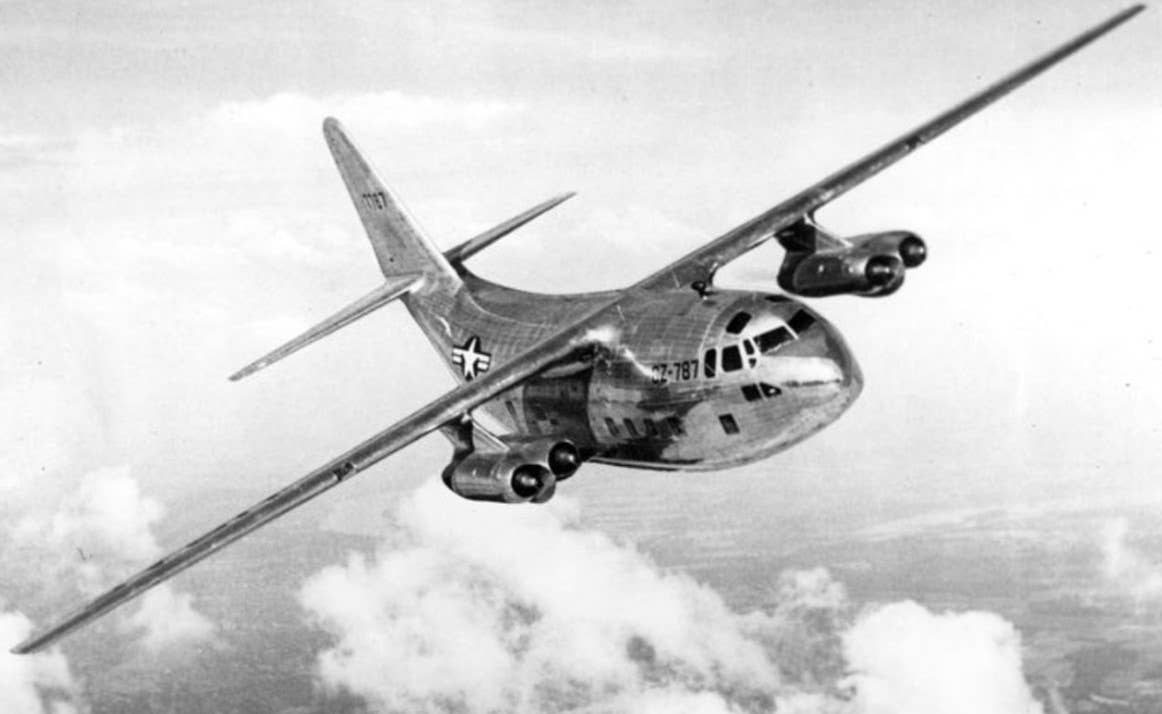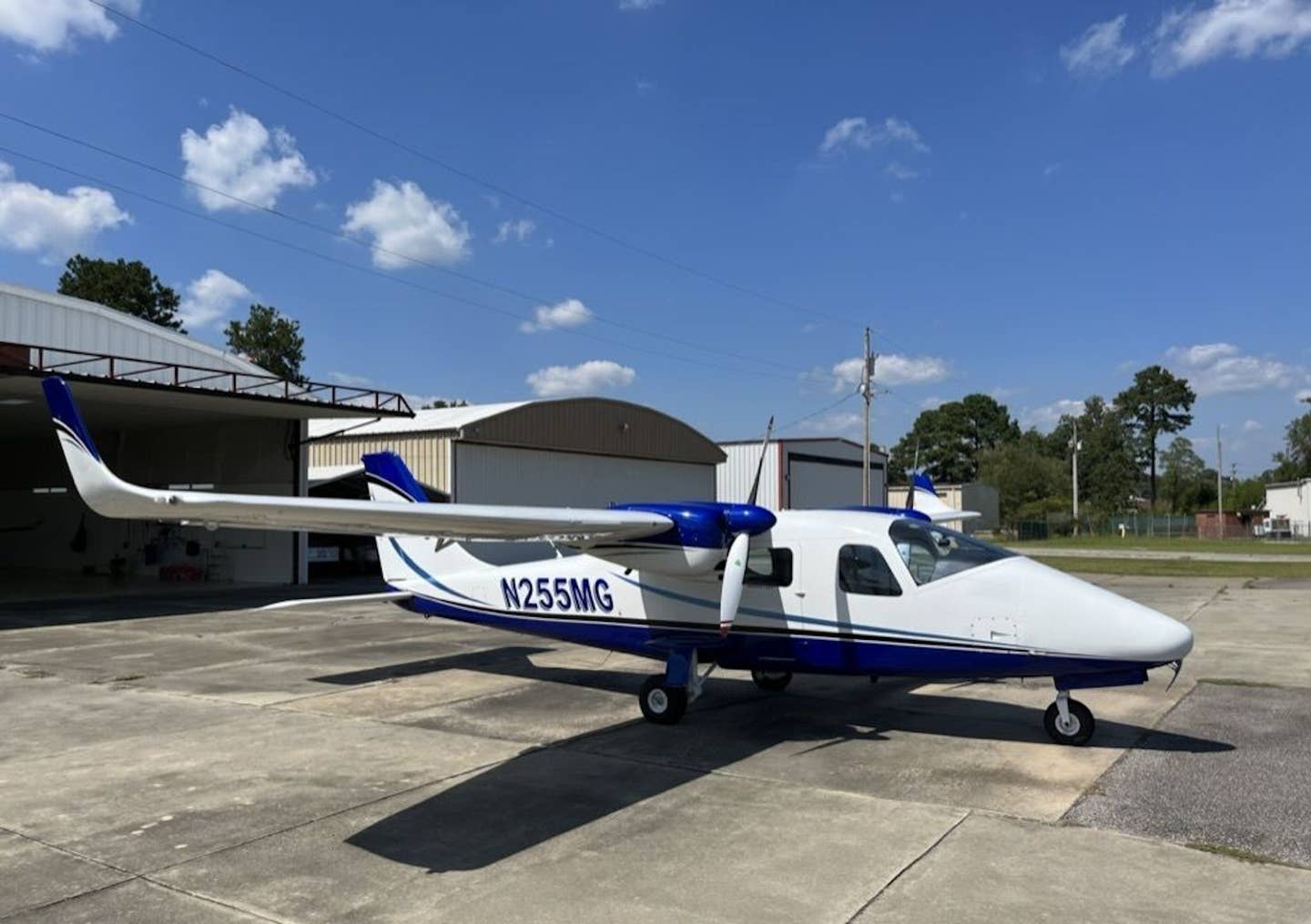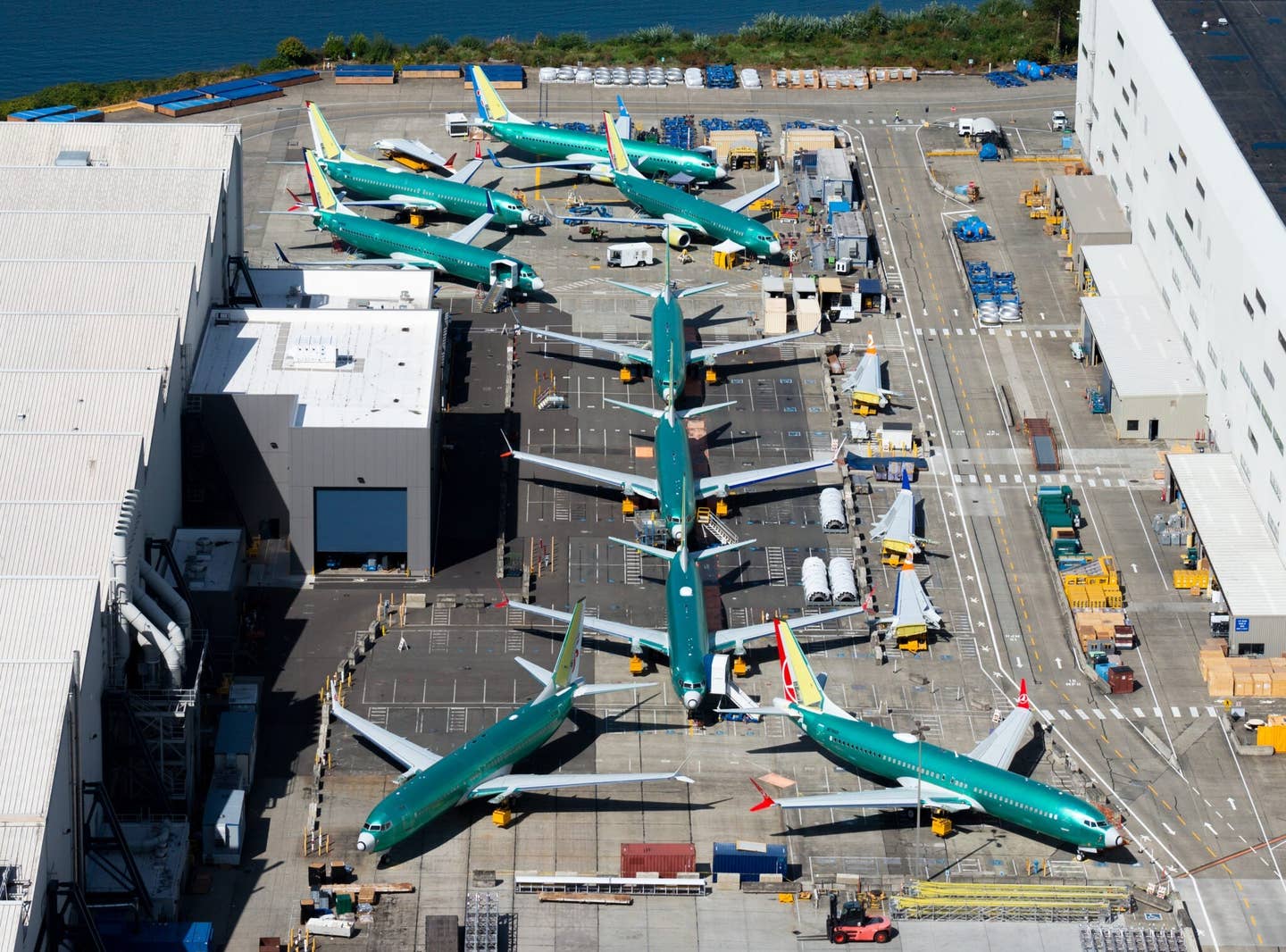The Unusual Evolution of the Fairchild C-123 Provider
Few cargo aircraft utilized five different engine configurations, encompassing piston, turboprop, jet, and combined piston/jet power.

One of the more extreme engine conversions of the platform, the Chase XC-123A incorporated turbojets in pods like the Boeing B-47 Stratojet. [U.S. Air Force]
One of the more extreme engine conversions of the platform, the Chase XC-123A incorporated turbojets in pods like the Boeing B-47 Stratojet. [U.S. Air Force]
Not all cargo aircraft begin their lives as unpowered assault gliders. Fewer still go on to utilize five different engine configurations, encompassing piston, turboprop, jet, and combined piston/jet power.
But this was exactly what transpired during the interesting life of the Fairchild C-123 Provider.
Glider
In the late 1940s, the U.S. Army Air Force decided it needed a larger, more capable assault glider in its inventory. Having successfully utilized smaller, fabric-covered gliders to insert troops into battle during World War II, it reasoned that such success could be continued in future conflicts. It awarded a contract to the Chase Aircraft Company to design and build two prototypes for evaluation—prototypes that would later evolve into the C-123 Provider.
- READ MORE: The Untapped Potential of the Horten HX-2
Called the XCG-20, the resulting aircraft was the largest glider constructed for such a purpose. With a wingspan greater than that of early Boeing 737s, it incorporated a 30-foot-long cargo area with a rear ramp that allowed vehicles to self-load. It was perhaps the only glider with a dedicated auxiliary power unit to power onboard systems like the landing gear and flaps.
Before the XCG-20 could enter production, however, the military determined that there was no longer a need for assault gliders. Perhaps anticipating this development, the engineers at Chase had the foresight to design the wing to accommodate the installation of engines. Accordingly, as the aircraft’s future as a glider came to an end, its future as a powered aircraft emerged.
Piston
The definitive version of the C-123 was the piston-powered transport. Utilizing the proven Pratt & Whitney R-2800 Double Wasp radial engine, which was also used in the Douglas DC-6, Chance-Vought F4U Corsair, and Republic P-47 Thunderbolt, among others, just over 300 examples were produced in the late 1950s.
Operated by the U.S. Air Force and Coast Guard as well as a variety of foreign militaries, the piston-powered C-123 would go on to serve in the Vietnam War as well as other conflicts around the world.
Its cargo ramp and capability of operating from short, unimproved airstrips made it useful for various roles, including troop transport, medevac, and special operations support. One of the last operators to utilize the C-123 in regular service was the Royal Thai Air Force, which retired them in 1995.
Turboprop
In the late 1970s and early ’80s, the Royal Thai government explored the possibility of converting its C-123s from piston engines to turboprop engines. This modification would have improved the aircraft’s takeoff and climb performance, as well as its cruise speed and reliability.
With the help of the Mancro Aircraft Company, it oversaw the installation of Allison T-56 turboprops on one C-123 for evaluation.
While the T-56 saw great success powering such aircraft as the Lockheed C-130 Hercules, Lockheed L-188 Electra, and Grumman E-2 Hawkeye, among others, little data exists that outlines the performance and technical success of the C-123 installation. Budget constraints reportedly brought the Thai government’s investment to a halt, and Mancro was unable to successfully market and sell the modification to any other potential customers.
Combination
For increased thrust and performance, a number of C-123s were modified with the installation of turbojet booster engines
Multiple jet engine types were utilized, including Fairchild’s J44, which also powered the Ryan Firebee target drone and the General Electric J85, which was also used in the Cessna A-37 Dragonfly and Northrop T-38 Talon.
The booster engines provided multiple benefits.
In addition to the expected improvement in takeoff and climb performance, they increased the aircraft’s payload by approximately 30 percent. Additionally, the presence of auxiliary engines provided an expanded safety margin in the event of the failure of a main piston engine, something that was surely appreciated by the crews flying over inhospitable terrain and hostile areas.
Jet
The most visually striking version of the platform was the Chase XC-123A.
Originally constructed as an XG-20 glider, it was fitted with four General Electric J47 turbojet engines mounted in pairs, like those on the Boeing B-47 Stratojet and the Convair B-36 Peacemaker.
While these turbojets supplemented thrust appreciably, they required significantly more maintenance than even the radial piston engines that would see widespread use. One source indicates the typical time between overhauls for the J47 was approximately 225-625 hours.

Subscribe to Our Newsletter
Get the latest FLYING stories delivered directly to your inbox






